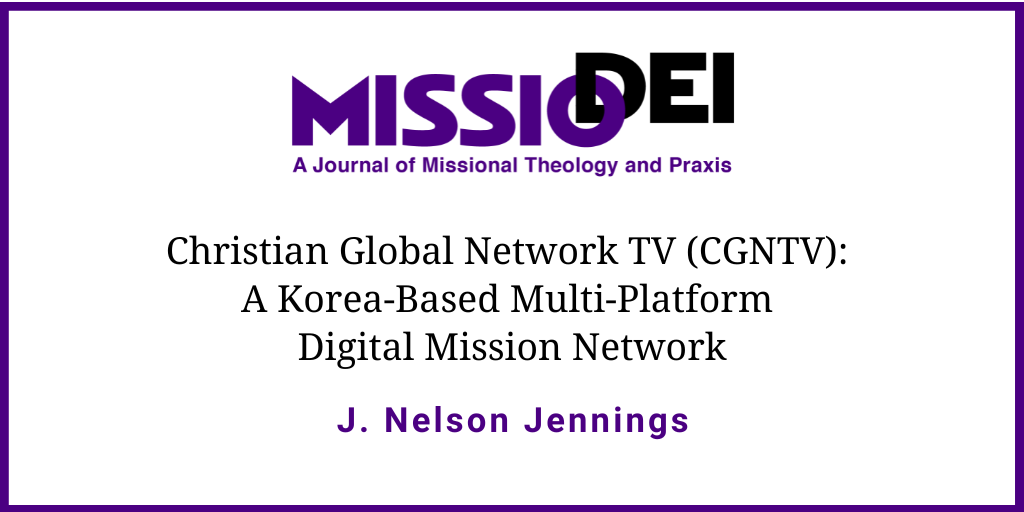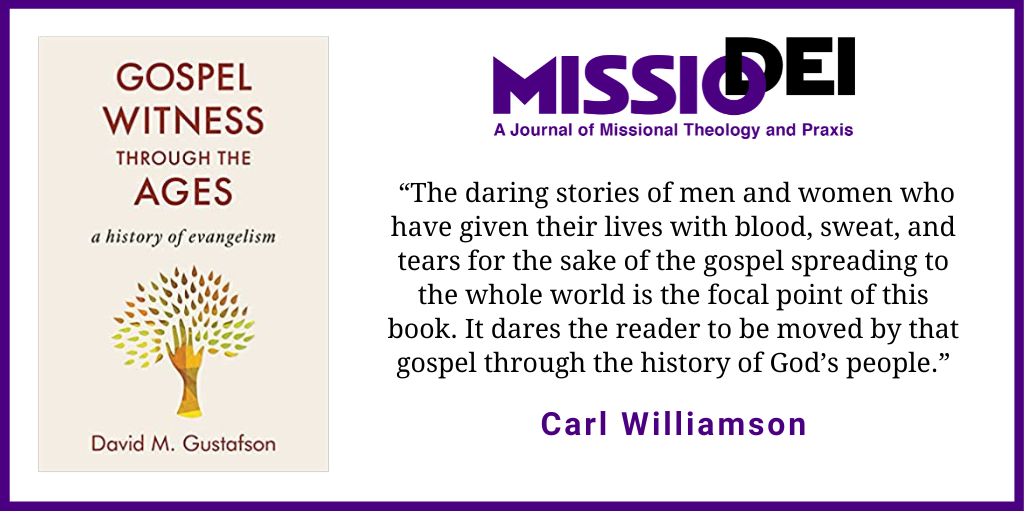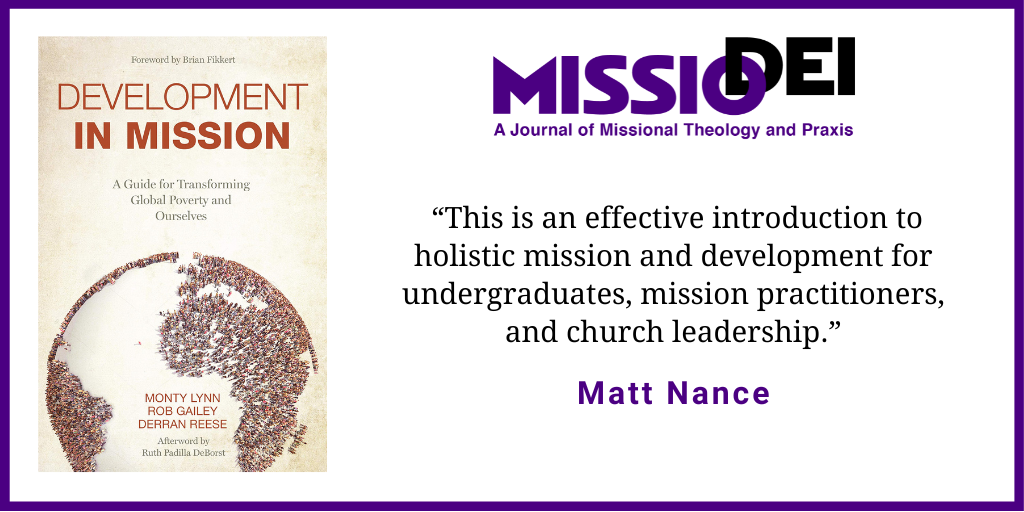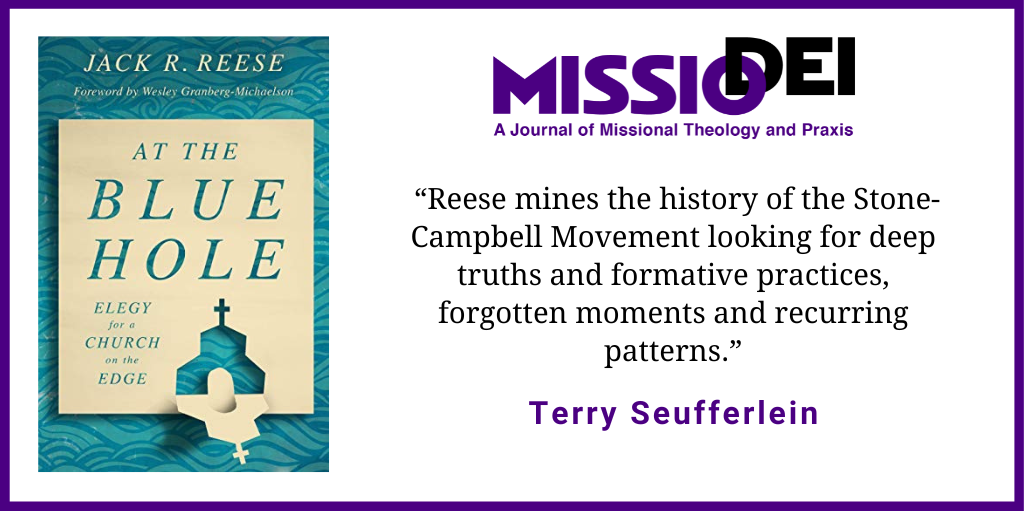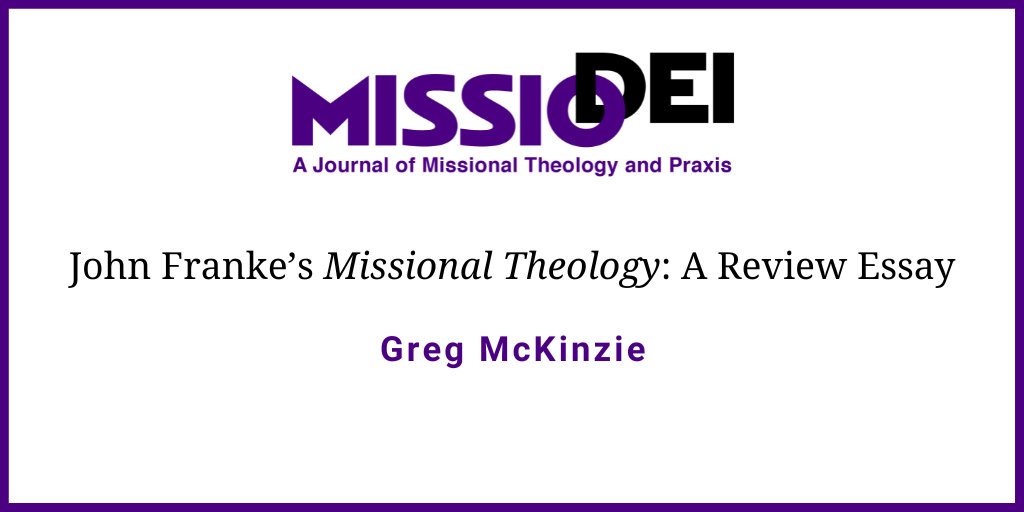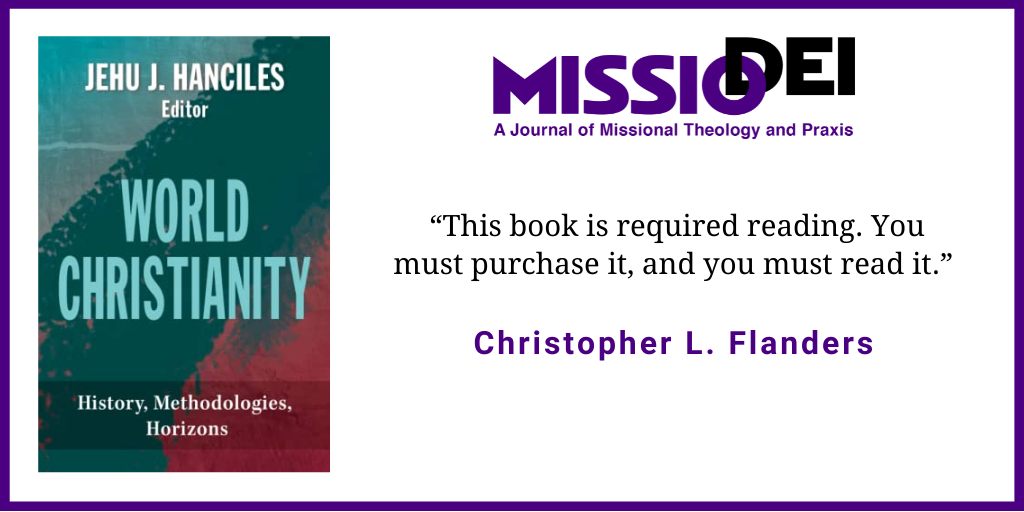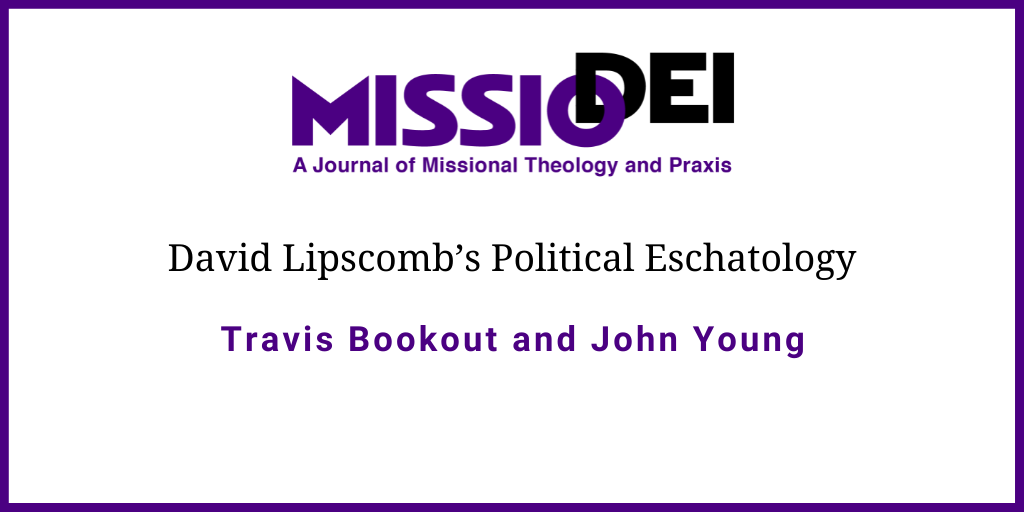
When the Anglican church began participating in global mission in the early eighteenth century, the Book of Common Prayer (BCP) became a means of encouraging orthodoxy and catholicity while also promoting indigenous global Christianity. Following a brief history and theology of the BCP, I support this claim by exploring two examples of Anglican mission practice in South India and New Zealand. I conclude with a brief missiological reflection on the place of a tool such as the prayer book for communicating the gospel and making disciples among all peoples today.
When the English Reformer, Thomas Cranmer (1489–1556) published the first Book of Common Prayer in 1549, he offered a means for the English church to be liturgically catholic and culturally English. That is, the prayer book allowed the English church to belong to the whole (catholic) church in the world—including what the church believed and taught—and to have a structure for daily prayer, weekly worship, Scripture reading, celebrating the sacraments, and following the major feasts of the church year. Because the BCP was produced in the English vernacular, the prayer book also allowed them to be fully English in their worship life.
When the Anglican church began to participate in global mission in the early eighteenth century, the prayer book continued to be a means of encouraging orthodoxy and catholicity while also promoting indigenous global Christianity. Following a brief history and theology of the BCP, I support this claim by exploring two examples of Anglican mission practice—South India and New Zealand—and discuss the development of the prayer book in those contexts. I conclude with a brief missiological reflection on the place of a tool such as the prayer book for communicating the gospel and making disciples among all peoples today.
Prayer Book History
Since the birth of the Christian community, the church has had a plan for worship. In 1 Corinthians, the Apostle Paul instructs: “When you come together, each of you has a hymn, or a word of instruction, a revelation, a tongue or an interpretation. Everything must be done so that the church may be built up . . . But everything should be done in a fitting and orderly way” (1 Cor 14:26, 40, NIV). In addition to valuing orderliness, Paul also speaks to the contents of worship. From a very early point, worship or liturgy (leitourgia or “work of the people”) included the public reading and preaching of Scripture, praying the Psalms, singing hymns, celebrating the Lord’s Supper, baptizing, praying, and gathering for meals among other practices.
Driven by the conviction to remain orderly and maintain theological orthodoxy, the early church in the first five centuries developed liturgical plans for worship (e.g., Didache, Apostolic Tradition, Didascalia Apostolurum). These church orders or published liturgical manuals aided both church leaders who led worship celebrations as well as Christian worshippers. During the medieval period just prior to the English Reformation, a number of liturgical manuals were in use.
Prayer Book Components
The Book of Common Prayer contained six essential elements that contributed to sixteenth century worship.
Daily Worship. The BCP offered directions for morning and evening prayer that could be prayed in the home or at church. This daily corporate worship consisted of prayers of confession, praise, thanksgiving, intercessions, praying the Psalms, as well as readings from the Old Testament, New Testament, and the Gospels.
Weekly Worship. It provided a plan for weekly corporate worship with a liturgy for the Holy Eucharist or Lord’s Supper. The Eucharist was preceded by the Great Litany, extended petitions that were “sober” and “penitential.” Cranmer began the BCP project by first crafting the Great Litany in 1544.
Church Year. The prayer book guided worshippers through the church year, including the major seasons and feasts of Advent, Christmas, Lent, Holy Week, Easter, Ascension, Pentecost, as well as the remainder of the year known as Ordinary Time.
Lectionary. In addition to the calendar, the BCP included a lectionary—a schedule for reading Scripture in daily and weekly worship. While the lectionary initially followed a one-year schedule, by the twentieth century it had been expanded to three years where much of the Scripture would be read in public worship during that cycle. Since the Psalter was central to Anglican worship, the full text of Miles Coverdale’s (1488–1569) 1535 translation of the Psalms was placed within the prayer book beginning in 1549.
Other Services. The BCP included liturgical services for baptism (both for infants and adults), confirmation, marriage, thanksgiving on the birth of a child, ministry to the sick and dying, and burials.
Collects. A final unique feature of the BCP were collects—prayers set within daily, weekly, and occasional worship. Structured by a “petition . . . aspiration . . . purpose for the prayer” and “concluding appeal to Jesus as the mediator and advocate,” the collects “are among the most characteristic and recognizable features of prayer-book worship.”
The BCP also included an appended section on Anglican doctrinal foundations, including the Apostles’, Nicene, and Athanasian creeds. Later, the Thirty-Nine Articles, a non-comprehensive collection of statements of Anglican belief, were added to the appendix along with the Ordinal—services for ordaining bishops, priests, and deacons.
Ultimately, the prayer book provided worshippers a sense of spiritual time and a rhythm for daily, weekly, annual, and lifetime worship. Alan Jacobs writes:
The completed Book of Common Prayer considers time in three aspects. First, in its [calendar], it treats salvation history, walking the people of God through the seasons of the church year, following the sequence of events from the Fall of humanity to the Second Coming and the Last Judgment. Second, it treats the passage of each human being through the stages of life, from birth to burial. And third, in the bookends of Matins [morning prayer] and Evensong [evening prayer], it treats the diurnal rhythms of each given day. The prayer book masters and orders time on each of these scales; it renders temporal experience accessible and meaningful for each Christian participating in the life of Christ’s Church.
Cranmer’s work on the Book of Common Prayer was not a significant innovation. His major contribution was synthesizing the existing medieval prayer books and simplifying worship for English Christians. Jacobs notes, “the prayer book replaced a motley collection of liturgical manuals employed by priests and other participants in public rites, but it is also, and perhaps equally, the successor of some of the most widely used manuals of personal devotion from the Middle Ages.” In establishing morning and evening prayer, Cranmer reduced the seven daily prayer offices of the Benedictine monks to two offices, which framed the day in worship. This allowed those who had not taken monastic vows—lay working people as well as priests occupied with the work of the church—the opportunity to experience daily asceticism (spiritual discipline) within the routine of their daily lives.
Prayer Book Timeline
In surveying how the BCP developed in the life of the Church of England and eventually became a text for worship around the world, it is worth mentioning some key dates in the prayer book’s history.
1549, Cranmer presents the first edition of the BCP.
1552, Cranmer revises and publishes the second edition of the BCP.
1559, Third edition of the BCP published under Elizabeth I.
1567, BCP translated into Welsh.
1604, Hampton Court Conference and the fourth edition of the BCP.
1608, BCP translated into Irish.
1662, Fifth edition of the BCP—the last official English edition.
1789, First American BCP.
1879, BCP translated into Japanese.
1922, First Canadian BCP.
1928, American BCP revised.
1950, Liturgy of the Church of South India published.
1954, South African Prayer Book published.
1963, Book of Common Worship for India published.
1964, A Liturgy for Africa published.
1979, American BCP revised.
1989, New Zealand Prayer Book published.
2000, Common Worship: Services and Prayers of the Church of England published.
2019, American BCP revised (Anglican Church of North America).
This non-exhaustive timeline reveals a number of important points in BCP history. First, the prayer book was translated very early into the neighboring languages (Welsh, Irish) of the British Isles. Second, after 1662, there is no official BCP for the world or English-speaking world. Third, as global Anglicanism developed apart from British colonial control, the BCP in the English-speaking world (e.g., USA, Canada, South Africa) began to reflect the needs and concerns of those local contexts. Fourth, as the prayer book is translated into other languages (e.g. Japanese, Maori), it becomes an increasingly local product, a fact that I will support through case studies below. At present, the BCP has been translated into over 200 languages.
Prayer Book Theology
Following the thesis that the BCP contributed to both catholicity and indigeneity, two theological aspects of the prayer book should be noted: (1) that it was (first) produced in the English vernacular and (2) that it contributed to unity in global church worship.
The Vernacular
Prior to 1549, and for over a thousand years, English Christians officially worshiped in Latin. Following the Western Roman Catholic Church, which elevated the Latin Vulgate Bible as well as the Latin liturgy, Western European Christians did not worship in the vernacular—their heart language.
Despite this general practice, the English church seemed to desire vernacular worship for centuries before the Protestant Reformation. Toward the end of his life, Oxford professor and parish priest John Wyclif (ca. 1328–1384) labored with two of his students to translate the Latin Vulgate into English. Anticipating Luther’s doctrine of the priesthood of the believer (sola sacerdos), Wyclif was convinced that the English Bible should be in the hands of every believer. In the late fourteenth century, Wyclif raised up a movement of wandering preachers known as the Lollards, who preached the gospel around England and secretly distributed English Bibles. Later, in the fifteenth century, initial forms of English language prayer books could be found.
As the Protestant Reformation spread across Europe, Bible translation into European languages increased—a clear expression of the Reformation values of biblical authority (sola Scriptura) and the priesthood of the believer. Though it was illegal to translate the Bible into English well into the sixteenth century, Moorman notes that “early in the sixteenth century the demand for an English Bible grew as the ideas of the reformers got more footing in the country.” Since the early 1520s, William Tyndale (1494–1536) had been secretly working on a translation in England. After fleeing to Germany in 1524, Tyndale successfully published his New Testament translation in 1526 and a portion of the Old Testament by 1530. In 1535, he was captured by English soldiers in Antwerp and was executed the following year.
Though Tyndale was put to death during King Henry VIII’s reign, the king had expressed interest in the English Bible project as early as 1529. With Henry’s blessing, Miles Coverdale produced an English Bible in 1535, largely based on Tyndale’s work. At this time, King Henry officially lifted the ban on English Bibles and allowed them to be placed in churches. By 1538, three more English translations had been published, including the Great Bible (1538), which was based on Tyndale and Coverdale’s work. By 1604, King James I commissioned the Hampton Court Conference, and the Authorized Version was published in 1611.
While the English church was experiencing its own Reformation, Cranmer introduced a worship plan—the Book of Common Prayer—that was also in the English vernacular. Jacobs writes, “For Cranmer . . . it was necessary for the English church, a theologico-political entity, that worship be embodied in one book, in one language, that mandated one use.” Defending vernacular worship against Roman Catholic detractors, John Jewel (1522–1571) cited Article 24 of the Thirty-Nine Articles (an informal Anglican confession of faith): “it is contrary to the word of God, and the practice of the primitive church to use in public prayers and administration of the sacraments any other language than what is understood by the people.”
Prior to Cranmer’s introduction of the BCP, English priests had quietly read the liturgy in Latin while the congregation prayed or listened. Now Cranmer directed priests to celebrate the liturgy in a loud and clear voice. An English vernacular liturgical gathering not only promoted understanding, but it also invited and required participation. The faithful were hearing the Scriptures, praying, and participating at the Lord’s Table in their own heart language. Through worshiping in the vernacular, the Anglican value of “the law of praying is the law of believing” (lex orandi, lex credendi) could be fully experienced. The daily and weekly use of the prayer book provided a powerful means to disciple English Christians.
Vernacular worship finds its basis in our Lord’s incarnation. In taking on flesh, assuming an authentic humanity, and dwelling among humans, Jesus not only showed the Father but also preached the good news of the kingdom. As Andrew Walls argues, since Christ made the gospel at home in first century Palestinian culture, the gospel should also be at home in every culture and understood in the local languages and cultural contexts. Similarly, Lamin Sanneh calls Christianity a “vernacular translation movement” because “the vernacular has a primary affinity with the gospel.” While Sanneh’s application is largely the translation of Scripture into local languages, the vernacular principle also extends to the church having a worship life in the heart language and cultures of its people. Cranmer’s work to develop the BCP in English and the work of others to translate the prayer book into over 200 languages demonstrates the vernacular principle in practice. Indeed, even though some Anglican churches (e.g. Uganda, Kenya, India) have chosen to keep the prayer book in a national language such as English—which may not be the worshippers heart language—these same churches have expressed the vernacular principle through local vocabulary, expressions, natural landscape, and metaphors.
Worship with the Global and Historic Church
In his influential work, The Christian Priest Today, Michael Ramsey writes about daily worship using the prayer book: “In the Daily Office we are lifted beyond the contemporary . . . praying with the church across the ages and with the communion of God’s saints.” Ramsey’s claim could also be applied to weekly worship (e.g., the Holy Eucharist), services during the church year (e.g., Advent, Holy Week, Pentecost), and other services (e.g., baptism, marriage, ordination). When believers open the prayer book for worship, they are praying the same prayers that have been prayed and are being prayed all around the world.
In praying with the church, believers join with the historic and global church in shared orthodoxy. Vincent of Lérins (d. ca. 445) defined orthodoxy as what has been believed “everywhere, always, by all.” Paul called it the “pattern of sound teaching . . . the good deposit” entrusted to the Apostles who would share it with “reliable people who will also be qualified to teach others” (2 Tim 1:14; 2:2). When Vincent says the gospel has been believed “by all,” he refers to the catholic church—the whole or universal church in the world and throughout time.
The prayer book allows the church today to be catholic (the whole church in the world) and orthodox (correctly remembering the good deposit or what the apostles received from our Lord). Through the lectionary, the church reads the canonical Scriptures and receives teaching from the Word each week. By regularly celebrating the Lord’s Supper, the church is nourished by the real presence of Christ and reminded of the gospel—our Lord’s death, burial, and resurrection. By reciting the Apostles and Nicene Creed, the church publicly declares faith in the Father, Son, and Holy Spirit and remembers God’s saving work for mankind. Though brief, the creeds are supported by the richness of biblical teaching from the Old and New Testaments. The creeds clarify the essentials of the gospel, showing what is and is not Christian faith.
Contextualized Prayer Book Worship: India and New Zealand
Since worship ought to be contextual and developed with the building materials of local culture, the prayer book should also be contextual. This has actually been encouraged since the sixteenth century. Article 34 of the Thirty-Nine Articles states: “Every particular or national church hath authority to ordain, change, and abolish, ceremonies or rites of the church ordained only by man’s authority, so that all things be done to edifying.” Charles Hefling notes, “The prayer book is . . . more like a play book, the ‘script’ actors use for performing a play. In this case the ‘acts’ to be performed are acts of worship.” While the BCP includes some fixed elements (e.g., daily prayer, weekly Eucharist, baptismal liturgy), it was always meant to be translatable to local cultures. William Sachs adds, “At the heart of mission lay the task of adapting the church’s manner of worship. . . . Anglican missionaries became astute students of local cultures and adroit at translation of texts, especially the prayer book, and adaptation of its usage.” These values were essential to the launch of the Society for Promoting Christian Knowledge in 1698—the oldest Anglican mission structure—whose mission included “printing of vernacular prayer books and other Christian literature in India.”
As global Anglicanism became increasingly driven by mission more than imperialism in the nineteenth century, the contexts of Canada, South Africa, India, Australia and other nations called for distinct local expressions of the prayer book. During the 1988 Lambeth Conference, the assembled bishops from the global Anglican communion echoed Article 34, declaring: “each Province should be free, subject to essential universal Anglican norms, and to a valuing of traditional liturgical materials, to seek that expression of worship which is appropriate to its Christian people in their cultural context.”
Church of South India
Protestant mission to South India began in 1795 when German Pietist missionaries Bartholomäus Ziegenbalg (1682-1719) and Heinrich Plütschau (1676-1752) were sent to minister in the Danish colony of Tranquebar at the request of Danish King Frederick IV (r. 1699–1730). As part of their work, the men labored to translate the New Testament into Tamil by 1714. Also, in partnership with the SPCK, these Lutheran missionaries worked on the Tamil version of the Book of Common Prayer.
Despite British colonial control over India from 1858–1947, many labored to establish an indigenous Indian church. The Anglican Church Missionary Society (CMS) leader and strategist Henry Venn (1796–1873) advanced the idea of three-self churches (self-led, self-supporting, self-propagating). The greatest early example of a South Indian Anglican leader was Bishop Vedanayagam Samuel Azariah (1874–1945). Trained at the CMS theological college, Azariah served with the YMCA and later the Indian Missionary Society in cross-cultural ministry in Andhra Pradesh. One of a handful of non-western church leaders at the 1910 Edinburgh World Missionary Conference, Azariah probably had the greatest impact when he announced to the delegation, “give us friends”—a call to equal partnership and collaboration in global mission. In 1912, Azariah was consecrated as the bishop of Dornakal.
Though the Indian church experienced growth in the nineteenth and twentieth century, disunity among church traditions and denominations proved to be an obstacle. A desire for unity prompted discussions about a unified Church of South India (CSI). Beginning in 1919, Anglicans, Methodists, Presbyterians, and Congregationalists began talking about becoming one church. In 1947, the Anglicans merged with the Methodists and the South India United Church (Presbyterians and Congregationalists who had already merged) to create the Church of South India. This coincided with India’s independence from Great Britain and allowed the Indian church to address its own church needs and cultural context. Though it initially had no official relationship to the Anglican church, the CSI became an official province of the global Anglican communion in 1998.
The Church of South India prayer book project began in 1948 and came to fruition as the Liturgy of the Church of South India in 1950. It was later revised as the Book of Common Worship in 1963. The CSI prayer book was produced in the four main South Indian languages—Tamil, Telugu, Malayalam, and Kannada (sometimes called Canarese). During the 1960s when the English-speaking world was revising its prayer books toward more contemporary language—updating “thee” and “thou” language—the Book of Common Worship was already available in South Indian colloquial languages.
Since the CSI was welcoming four Protestant traditions into one new denomination, the prayer book committee strived to be flexible in liturgical forms such as the Eucharist. The CSI prayer book also made some adjustments in ordaining clergy and allowed for more extemporaneous prayers during worship gatherings. Finally, the CSI liturgy also drew upon the Indian Orthodox tradition for some responses during the prayers of thanksgiving.
The biggest observable changes in the Indian prayer book pertained to the Eucharist. Following Gregory Dix’s teaching on the shape of the liturgy, the CSI Eucharist consisted of preparing the table, giving thanks, breaking the bread, and distributing it. Instead of a “Prayer of Consecration” for the bread and wine, a “Prayer of Thanksgiving” was offered instead. They prayed: “Be present, be present O Jesus, thou good High Priest, as thou wast in the midst of thy disciples, and make thyself known to us in the breaking of bread, who livest and reignest with the Father and the Holy Spirit, one God, world without end. Amen.” Finally, avoiding sacrificial language entirely in the Eucharist, the Indian celebrants prayed in a rather Zwinglian fashion and similar to Cranmer’s revisions to the 1552 BCP: “we do this in remembrance of him.”
While the CSI prayer book project contributed to advancing local worship in the South Indian context, it became a model for twentieth century global Anglicans. After serving as convenor of the CSI prayer book committee, Leslie Brown (1912–1999) was consecrated as bishop of Uganda in 1952. While serving in Africa, Brown drafted A Liturgy for Africa in 1964, which encouraged further local prayer books around the world.
New Zealand
Anglican mission in New Zealand began in 1814 when Samuel Marsden (1765–1838) of the Church Missionary Society partnered with an indigenous Maori leader to begin preaching the gospel. The Maori responded favorably to the gospel and by 1840 over one-third of the indigenous people were baptized Anglicans. With a prayer book developed in the local language by 1838, the Maori people prayed and sang hymns in their heart language from an early point in their church history.
Despite this encouraging gospel advance, British citizens were also settling in New Zealand. In 1840, the Treaty of Waitangi was signed, making New Zealand a British colony. Though there was inevitable conflict between missionary and colonial interests, the Church of New Zealand managed to continue with two cultural streams—the missionary church (Te Hahi Mihinare) for the Maori, and an English-speaking church for British settlers.
During this period, George Selwyn (1809–1878) was set apart as the first bishop for New Zealand in 1841. Serving in that role for nearly three decades, Bishop Selwyn learned the Maori language, strived to ordain indigenous clergy, and succeeded in setting up a church constitution that freed the Church of New Zealand from British control.
A self-led Maori Anglican church did not become a reality until the later twentieth century when Maori bishops were consecrated. Jenny Te Paa-Daniel notes: “This freedom enabled them to contribute to the common life of the church the manifold gifts and understandings of indigenous spirituality, through the medium of the Maori language in liturgical music, dance, prayer, and art.”
Though a Maori-language prayer book had first been developed in 1838, between 1964 and 1989, a commission labored to produce a bi-lingual (Maori-English) prayer book for all New Zealand Anglicans. Influenced by A Liturgy for Africa (1964), the church began worshipping with A New Zealand Prayer Book / He Karakia Mihinare o Aotearoa in 1989. Reflecting their freedom to have a play book for worship that reflected the cultures of New Zealand, they called it A New Zealand Prayer Book instead of The New Zealand Prayer Book.
A number of characteristics in this prayer book reflected local Maori culture. First, in addressing God, the prayer book emphasizes God’s tender and gentle ways. He is called “God of grace,” “ever loving God,” “God of truth and beauty,” and “merciful God.” One particular prayer emphasizes this tenderness:
Abba God we call you Father
And your care for us is motherly as well
Protect our power to love and be loved,
And make us glad to be called your children
One whanau [extended family] in Christ.
Next, the Maori adaptation of Benedicte omnia opera (“O All Ye Works of the Lord, Bless the Lord”) reflects the cultural and natural worlds of Polynesian peoples:
O give thanks to our God who is good:
whose love endures forever.
You sun and moon, you stars of the southern sky:
give to our God your thanks and praise.
Sunrise and sunset, night and day:
give to our God your thanks and praise.
All mountains and valleys, grassland and scree,
glacier, avalanche, mist and snow:
give to our God your thanks and praise.
You kauri [tall, straight tree] and pine, rata [tree with large red flowers] and kowhai [yellow-blossomed tree], mosses and ferns:
give to our God your thanks and praise.
Dolphins and kahawai [type of fish], sealion and crab,
coral, anemone, pipi [shellfish] and shrimp:
give to our God your thanks and praise.
Rabbits and cattle, moths and dogs
kiwi [national bird] and sparrow and tui [parson bird] and hawk:
give to our God your thanks and praise.
You Maori and Pakeha [non-Maori], women and men,
all who inhabit the long white cloud:
give to our God your thanks and praise.
All you saints and martyrs of the South Pacific:
give to our God your thanks and praise.
Third, the liturgy for “Prayer at Time of Death” also developed within the Maori cultural tradition. Typically, when someone is about to pass this life, friends and family gather around and converse with the loved one as they are departing. So, the funeral liturgy also includes a direct address to one the departing:
Go forth N (Christian soul), on your journey from this world,
in the love of God the Father who created you,
in the mercy of Jesus the Redeemer who suffered for you,
in the power of the Holy Spirit who keeps you in life eternal.
May you dwell this day in peace,
and rest in the presence of God. Amen.
After the funeral, there is an additional liturgy for blessing the home of the departed, which includes cleansing the house and praying for God’s light and peace to fill the home for the loved ones remaining.
Fourth, the New Zealand prayer book is contextual because its church calendar contains feast days for Maori saints. For example, Rota Waitoa, the first ordained minister (1853) is remembered on May 22, while Frederick Bennett, the first Maori bishop (1928) is commemorated on May 23. The church calendar also highlights some Maori martyrs.
Finally, A New Zealand Prayer Book celebrates Maori culture through the artwork on its pages. As the project was coming together, thirteen original Maori paintings were commissioned to adorn the pages of the prayer book.
Prayer Book Missiology
These case studies from South India and New Zealand represent just two accounts of global Anglican mission in which prayer book worship was central to communicating the gospel and making disciples. I conclude this study with some missiological reflection, particularly regarding mission in the twenty-first century and the relevance of employing a prayer book strategy in Anglican mission and in other church traditions.
Oral Peoples
A prayer book approach is meaningful for mission among oral learners—those who prefer to communicate through oral means instead of through print. Reflecting back on sixteenth-century England, Kenneth Stevenson reminds us that “few could read but all could listen to and understand the English text.” Paul Stanwood adds that “The genius of the prayer book is its recognition that the liturgy is for speaking (or for some singing) and listening, not principally for reading in quiet privacy.”
While a prayer book is a written product, it invites worshippers to participate through spoken and auditory worship. A wonderful recent model of this comes through the account of the twenty-one Egyptian Coptic martyrs who were beheaded by ISIS in Libya in 2015. Because the Coptic liturgy is sung in its entirety, every member of the church is effectively a choir member, assisting the priest as worship leaders. After years of singing the liturgy, Coptic Christians learn the liturgy by heart. Because public worship opportunities in Libya were limited, the twenty-one men, who were temporary guest workers in Libya, turned the main room of their living quarters into a worship space where they sang the liturgy each day. During their forty-three days in captivity, they continued their daily worship, singing hymns, praying, and hearing Scripture guided by the liturgy.
Since the elements of prayer book worship allow for participation through speaking and singing, it seems strategic to pursue this form of worship among oral peoples. While such worship can be facilitated by an actual book in hand, the liturgy can be said or sung from memory as many oral peoples have already demonstrated.
Communal Peoples
Cranmer’s worship plan was called The Book of Common Prayer—prayer and worship that happens in community. In more individualistic Western societies, liturgical worship challenges private, silent, and individual worship as believers are invited to be a part of the body of Christ. Writing in a twentieth-century British context, Martin Thornton adds: “Christian prayer always involves a corporate element, with liturgical prayer—common prayer—as its foundation and fulcrum.” This is communal value is evident in the prayer, Te Deum Laudamus (We Praise You God):
We praise you, O God; we acclaim you as Lord;
all creation worships you, the Father everlasting.
To you all angels, all the powers of heaven,
the cherubim and seraphim, sing in endless praise:
Holy, Holy, Holy, Lord God of power and might,
heaven and earth are full of your glory.
The glorious company of apostles praise you.
The noble fellowship of prophets praise you.
The white-robed army of martyrs praise you.
Throughout the world the holy Church acclaims you.
In communal societies, liturgical worship does not encounter such opposition because people are accustomed to praying aloud and participating together. Christians from communal cultures are better equipped to appreciate the fact that during liturgy, they are praying with the whole church in the world today and claim membership in the global body of believers in every age going back to the first century. While Western individual identity is often captured in Descartes’s famous statement, “I think therefore I am,” collective identity in the African context is expressed through the notion of ubuntu (“I am because we are”). When applied to the church and to worship, African believers understand their spiritual identity in relation to the whole (catholic) church. It should not come as a surprise that the nations with the highest number of Anglicans (e.g., Nigeria, Uganda, South Sudan, India) are also communal societies. The twentieth-century Indian priest Emani Sambayya (1905–1972) summarizes: “The prayer book services leave me in no doubt that I am always worshiping with the church. It is impossible to miss the “we” and “us” throughout its services. Thus in the Christian faith I not only find a new center of life, but also I am incorporated into a vast worshiping community, partly visible, and partly invisible. I worship God in the company of my fellow Christians as well as with the saints in glory, with angels and archangels, and with all the heavenly company.”
Discipleship
Prayer book worship provides a powerful means to disciple believers. Anglicans assert that the law of praying is the law of believing. That is, the church comes to believe the gospel and learns to live it out by praying. Hefling writes, “Learning how to speak the prayer book ‘language’ . . . to have learned it well is to have assimilated and made one’s own . . . grammar of believing.” For example, praying the prayers of confession on a daily and weekly basis helps to instill into the mind and heart of believers the value of confession and repentance.
Prayer book worship, particularly through the lectionary, also enables believers to engage Scripture. In morning and evening prayer and weekly services, Christians read the Psalms, passages from the Old and New Testaments, as well as the Gospels. Scripture is also threaded throughout the liturgies and prayers. Alan Jacobs asserts, “one could argue that Cranmer’s chief reason for implementing standard liturgies was to provide a venue in which the Bible could be more widely and thoroughly known.” We meet God and are transformed into Christlikeness through encountering the Word. In a twenty-first century world where many pastors lament biblical illiteracy, prayer book worship could offer a needed solution for getting Scripture back into the lifeblood of the church.
Finally, daily and weekly prayer book worship offers believers rhythms for worship (e.g. confession, prayer, declaring belief through the creeds, engaging Scripture). These spiritual disciplines are means of grace to shape the believer toward mature Christian belief and living. Such an approach might also facilitate discipleship in a noisy twenty-first-century world where people are overworked, tired, and bombarded with information in the digital sphere.
Leadership Development
Finally, the prayer book provides a central means to train church leaders, including lay leaders as well as those seeking ordination. Though church leaders ought to be apprenticed for practical ministry in a parish or local church setting, the prayer book can function as the primary training curriculum. Priests in training learn much about serving at the Lord’s Table, leading prayers, and facilitating the rest of the liturgy directly from the prayer book.
The BCP also contains a plan for many of the weekly and occasional services. I have a friend who was an ordained US military chaplain. For years, he struggled to plan worship services for his soldiers on base. He shared this struggle with an Anglican chaplain who offered him a prayer book as a resource. The chaplain began to use the BCP and eventually became ordained as an Anglican priest. I know another ordained pastor who was preparing to lead his first funeral service. Not knowing exactly what to do for the service, he downloaded the BCP funeral liturgy and simply followed it. Finally, during COVID-19 and the closure of our church space, I simply led my family through morning prayer on Sunday mornings in our home. At times, another family joined us, and together we shared the leadership of our “living room liturgy” by using the prayer book. In short, the prayer book offers a sustainable tool for training ordained ministers and lay people alike for the work of ministry.
Summary
In this paper, I have argued that the prayer book tradition—both the Book of Common Prayer and its subsequent global forms—has served as a key communication tool in mission, encouraging the church to be both catholic and indigenous. On one hand, the prayer book invites the worshiper to meditate on the gospel and essential Christian teachings from the Scriptures and historic creeds. On the other hand, global Christians are invited to craft prayers and construct liturgies that put the gospel at home within global cultures. The Liturgy of the Church of South India and A New Zealand Prayer Book are just two examples of this.
I have further argued that a prayer book approach connects with oral learners and communal peoples and also facilitates discipleship and leadership development. While Anglicans will not want to lose sight of the prayer book tradition in global mission, other church traditions might also consider a prayer book-like approach in efforts to communicate the gospel and make disciples of all peoples.
Edward L. Smither (PhD, University of Wales-Trinity St. David; PhD, University of Pretoria) is a professor of history of global Christianity and dean of the College of Intercultural Studies at Columbia International University. His most recent books include Mission as Hospitality (2021) and Christian Mission: A Concise Global History (2019). Smither served for fourteen years in intercultural ministry in North Africa, France, and the USA.


